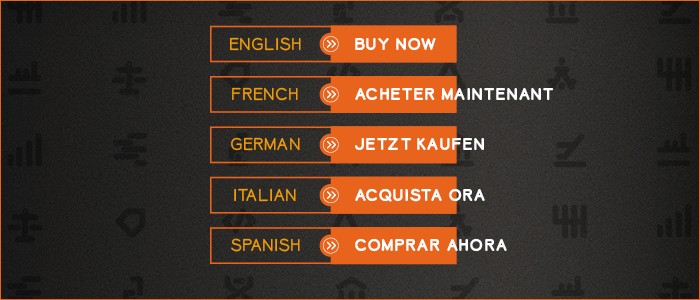- WHAT WE DO
- AI

- Industries

Content Services
- Technical Writing
- Training & eLearning
- Financial Reports
- Digital Marketing
- SEO & Content Optimization
Translation Services
- Video Localization
- Software Localization
- Website Localization
- Translation for Regulated Companies
- Interpretation
- Instant Interpreter
- Live Events
- Language Quality Services
Testing Services
- Functional QA & Testing
- Compatibility Testing
- Interoperability Testing
- Performance Testing
- Accessibility Testing
- UX/CX Testing
Solutions
- Translation Service Models
- Machine Translation
- Smart Onboarding™
- Aurora AI Studio™
Our Knowledge Hubs
- Positive Patient Outcomes
- Modern Clinical Trial Solutions
- Future of Localization
- Innovation to Immunity
- COVID-19 Resource Center
- Disruption Series
- Patient Engagement
- Lionbridge Insights
Life Sciences
- Pharmaceutical
- Clinical
- Regulatory
- Post-Approval
- Corporate
- Medical Devices
- Validation and Clinical
- Regulatory
- Post-Authorization
- Corporate
Banking & Finance
Retail
Luxury
E-Commerce
Games
Automotive
Consumer Packaged Goods
Technology
Industrial Manufacturing
Legal Services
Travel & Hospitality
SELECT LANGUAGE:
"Always design with the world in mind, even if you aren't yet translating your content.
It's a lot easier to design it right in the first place than it is to retrofit it."
—Kit Brown-Hoekstra, Comgenesis LLC, for The Definitive Guide to Website Translation, Lionbridge Technologies
When adapting for a global audience, localization and translation are often considered one and the same, rather than complementary processes. But while there's some overlap between the two, the software localization process is much more complex—and understanding its intricacies can help set you up for success as you expand into new markets.
What is software localization?
Software localization is the process of adapting software to the language, cultural and legal requirements of a specific locale. This means not only translating text-based elements, but also tweaking graphics, layouts, formatting, and more--not to mention satisfying local legal requirements, data compliance, device preferences, and technology trends.
With all the nuanced considerations to think about, it's easy to overlook elements that seem trivial, but play a crucial role in delivering a flawless product to the widest possible audience. So, where to begin?
The following are 10 software localization best practices and pitfalls to be mindful of.
1. Do approach localization as a strategy

First things first, it's important to be clear about how software localization will support your holistic goals. Approach software localization as a strategy, not a task, at every step of the process.
- Getting Started--Planning & Preparation
- Discovery--Goals & Requirements
- Content Audit, Analysis & Transfer
- The Proposal
- Project Kick-off
- Translation & Localization
- Review & Quality Control
- File Delivery, Go-live & Follow-up
Avoid localization failure by taking extra care in your requirements analysis and design phases, and ensure that all stakeholders are in agreement on target markets, languages, and issues unique to each. If you make global-readiness your goal, you'll never have to re-engineer to take advantage of a market opportunity.
2. Don't forget to design with localization in mind
A localization-friendly design is one that helps to cut schedule delays and cost overruns. It features source code and structure that helps to prevent:
- Replication of source bugs in target files
- Avoidable translation errors
- Common software localization errors, including functional, display, abbreviation, and over- and under-localization
Tip: Use templates to ensure consistent brand presence. Need to ensure your design is localization-ready? Test, test again, and test some more. Pseudo-localization (a form of QA testing) is a useful process that helps to reduce risk by revealing potential translation problems, such as user interface (UI) layout issues caused by special characters or string length.
3. Do build a library of internationalized objects
Remember: internationalization enables localization. Building a library of internationalized objects will spare you from rework as you resolve how to localize a software application into multiple languages. These include:
- User interface design elements
- Sort and search functionality
- Multi-byte character support (for Asian languages)
- Bi-directional or right-to-left support (Arabic & Hebrew languages)
- Address, number, date, and currency formats
4. Don't make source text too long

All languages have different sentence structures, different rules for pluralization, and use different amounts of words to express an idea. Minimize translation problems with clear and concise source content:
- Keep sentences brief and concise
- Use standard English word order, whenever possible
- Break up noun strings (many consecutive nouns)
- Avoid using synonyms; use one term to identify a single concept
- Leave humor out of your content
- Clarify dates, times, and measurements
- Include relative pronouns like "that" and "which"
- Stay in the active voice
- Replace phrasal verbs with a one-word substitute
- Do not use use acronyms; they will need extra translation and lose any secondary meanings
- Delete any idioms
Tip: As well as avoiding synonyms, don't "verb" your nouns. In other words, don't reuse the same text in different context. Many words in the English language could be either a noun or a verb: for example, file, share, and design. Decide on a single use for text and use it consistently.
5. Do plan for text expansion

English: BUY NOW
French: ACHETER MAINTENANT
German: JETZT KAUFEN
Italian: ACQUISTA ORA
Spanish: COMPRAR AHORA
The English language is estimated to consist of over 1,000,000 words, while most other languages have fewer than 500,000. So, when translated into other languages, English content strings are likely to expand or contract. For example, the English "Have a nice day!" is translated into German as "Ich wunsche Ihnen einen schonen Tag!": a 125% length increase. Translating English to Asian languages has the opposite effect.
At the least, plan for 30-35% expansion--and consider white space use. Again, focus on keeping the source text short, and other software localization best practices related to formatting and word choice.
6. Don't misuse icons

Of course, software localization best practices aren't only concerned with textual communication. Visuals, too, hold different connotations for different cultures. Icons--without text--are beneficial because they require less translation and can reduce cost. But remember that not all symbols are universal or neutral.
For example, a U.S.-style mailbox doesn't translate to many other cultures. Do your research and avoid images of hands or feet, animals, and other symbols which can have unexpected or unwelcome meanings.
7. Do use UTF-8 encoding

Most modern technologies default to UTF-8, the most popular format for Unicode. UTF-8 is described by Dr. Ken Lunde, a renowned information processing specialist, as "the world's first intelligent character encoding." Unicode is supported by all major hardware and software application companies and is required by standards such as XML, Java, and Javascript. Using UTF-8 ensures easy and correct translation into all languages, especially Asian CJKV (Chinese, Japanese, Korean, and Vietnamese) languages.
8. Don't hardcode text or punctuation

Hardcoded text--or text embedded in source code--must be extracted for translation when you're ready to localize. Your language service provider (LSP) can run a parser to identify translatable text, but you're better off minimizing it at the design level. Instead, use separate resource files--for titles, product names, and error messages, for example--and resource commenting to eliminate translation errors.
Tip: It may be tempting to concatenate separate strings using placeholders, with hardcoded word or phrase order, to reduce the size of a string. But this often results in mistranslation and incorrectly localized strings, as word order and grammar rules vary from language to language. To solve this problem, simply avoid it at all costs.
9. Do consult with a localization services expert
Before you kick off your project, provide your software localization services partner with as much information as possible to ensure a successful working relationship.
- Do you have plans for international growth in the near future?
- Who are your major customers?
- What is the number of languages required for your project?
- Do you have an in-house localization team? How will they interface with this project?
- What are you looking for in a translation provider? Speed, quality, cost, access to specialists?
Besides localization checklists provided for Android, iOS, and Windows development, your LSP can provide you with insights and optimized processes that will save you time, money, and rework.
Tip: Remember to provide your LSP with Do-Not-Translate (DNT) lists to prevent over- or under-localization. Both can impact code functionality if an incorrectly translated string has a critical function within the program.
10. Don't just meet expectations--exceed them.
In the end, every little detail deserves careful attention. From the simplest mobile app to complex multi-user systems, localization is the key to driving multilingual software sales and acceptance.
Benchmark your efforts using the 80-20 rule of "glocalization," or appealing to 80-20 ratio of global and local customer behaviors. By truly understanding local markets and incorporating cultural sensitivities into design and development, you won't just meet users' expectations; you'll transform their experience. With software development that is global-ready by design, there's no reason not to start unlocking global market opportunities.
To learn about how to localize software in more detail, contact a Lionbridge sales representative today.


